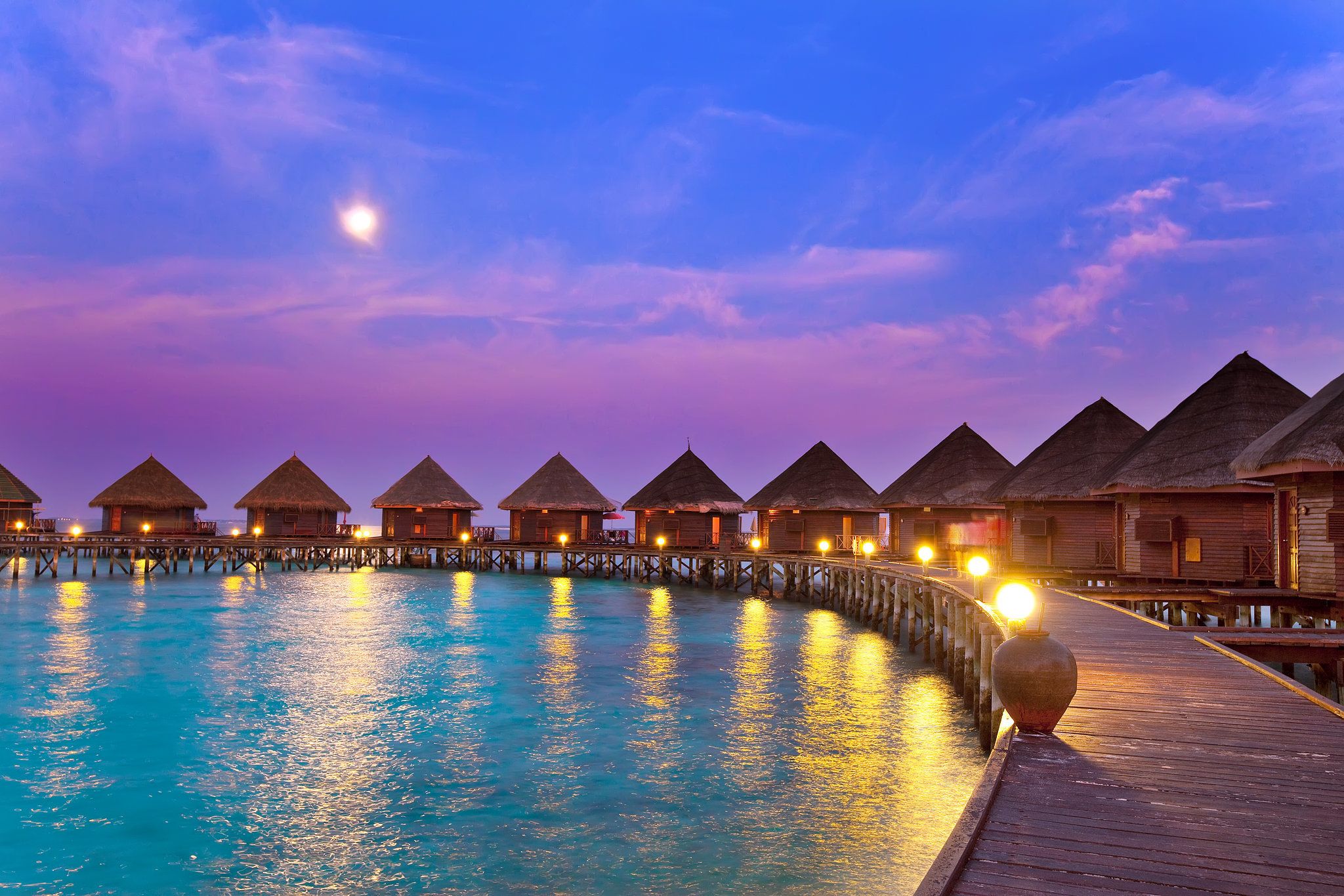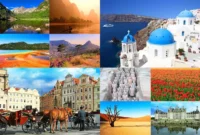Nice vacation places are more than just destinations; they’re experiences shaped by individual preferences and desires. This exploration delves into defining what constitutes a “nice” vacation, considering diverse budgets, travel styles, and personal tastes. We’ll examine popular global destinations, analyze factors influencing vacation choices, and explore various vacation experiences, from adventurous expeditions to relaxing retreats. Ultimately, this guide aims to assist in planning your perfect escape.
From bustling cityscapes to serene beaches and majestic mountains, the world offers a plethora of options. Understanding your priorities – whether it’s cultural immersion, thrilling activities, or simply unwinding – is crucial in selecting the ideal location. We’ll navigate the complexities of budgeting, booking, and sustainable travel practices to ensure a memorable and responsible vacation.
Popular Vacation Destinations
Choosing the perfect vacation destination can feel overwhelming, given the sheer number of options available globally. This section explores some globally recognized destinations, categorized by region and type, to assist in your planning process. We’ll examine their unique attributes and price ranges to help you make an informed decision.
Globally Recognized Vacation Destinations by Region and Type
Popular vacation destinations are diverse, reflecting varied preferences and budgets. Beach lovers might gravitate towards the Caribbean, while mountain enthusiasts might prefer the Alps. City explorers often find themselves drawn to vibrant metropolises like New York or Tokyo. The following examples illustrate this diversity.
| Destination | Region | Type | Price Range (USD per person, per week, estimated) |
|---|---|---|---|
| Maldives | South Asia | Beach | $2000 – $10000+ |
| Swiss Alps | Europe | Mountains | $1500 – $5000+ |
| Paris, France | Europe | City | $1000 – $4000+ |
| Maui, Hawaii | North America | Beach | $1500 – $6000+ |
| Kyoto, Japan | Asia | City | $1200 – $4500+ |
Unique Selling Propositions of Popular Destinations
Each destination offers a unique appeal to various traveler profiles. The Maldives, for example, attracts luxury travelers seeking secluded beaches and overwater bungalows. The Swiss Alps cater to adventure seekers and nature lovers with opportunities for skiing, hiking, and breathtaking scenery. Paris, with its iconic landmarks and rich history, appeals to culture enthusiasts and romantic travelers. Maui’s stunning beaches and volcanic landscapes attract those seeking relaxation and outdoor activities. Kyoto, with its ancient temples and traditional gardens, provides a unique cultural immersion experience for history buffs and those seeking tranquility. These are just a few examples of the diverse offerings available. Price ranges are estimates and can vary widely based on the time of year, accommodation choices, and activities undertaken.
Types of Vacation Experiences
Choosing the right type of vacation depends entirely on individual preferences and desired outcomes. A relaxing beach getaway offers a vastly different experience than a challenging trek through the Himalayas. Understanding the nuances of different vacation experiences allows for a more fulfilling and tailored travel plan.
Adventure Tourism
Adventure tourism focuses on physically active and thrilling experiences in natural settings. This often involves a degree of risk, pushing personal boundaries, and immersing oneself in the beauty and power of the environment. Activities can range from white-water rafting and rock climbing to zip-lining and hiking challenging trails. Amenities typically include comfortable but rugged lodging, access to experienced guides, and equipment rentals. For instance, a trip to Costa Rica might involve days spent exploring rainforests, canyoning down waterfalls, and navigating challenging jungle trails, staying in eco-lodges along the way.
Relaxation Retreats
Relaxation retreats prioritize rest, rejuvenation, and stress reduction. These vacations are designed to help individuals unwind and escape the pressures of daily life. They often feature spa treatments, yoga and meditation sessions, healthy cuisine, and tranquil environments. Think luxurious resorts with private villas, serene beaches, and dedicated wellness centers. A stay at a Himalayan spa, for example, might include daily yoga sessions overlooking snow-capped mountains, Ayurvedic treatments, and quiet time for reflection. Amenities would center around pampering and holistic well-being.
Cultural Immersion
Cultural immersion vacations emphasize experiencing the local culture of a destination. This involves interacting with the local people, learning about their traditions, customs, and way of life. Activities might include attending local festivals, taking cooking classes, visiting historical sites, and learning a few phrases in the local language. Accommodation could range from homestays with local families to boutique hotels showcasing local art and design. A trip to Japan could involve a stay in a traditional Ryokan, attending a tea ceremony, visiting ancient temples, and participating in a calligraphy workshop. The focus is on understanding and appreciating a different culture firsthand.
Eco-Tourism
Eco-tourism focuses on responsible travel to natural areas, conserving the environment, and improving the well-being of local people. This type of vacation emphasizes sustainability and minimizing the negative impact on the environment. Activities typically include wildlife viewing, nature walks, and volunteering opportunities to help protect local ecosystems. Lodging often involves eco-friendly accommodations, such as lodges built with sustainable materials or utilizing renewable energy. A trip to the Galapagos Islands might involve guided tours focusing on responsible wildlife observation, staying in eco-lodges committed to conservation efforts, and potentially participating in a sea turtle conservation project. The core principle is minimizing environmental footprint while supporting local communities.
Visual Representation of Vacation Experiences
Imagine a circular diagram. Each quadrant represents a different type of vacation experience: Adventure Tourism, Relaxation Retreats, Cultural Immersion, and Eco-Tourism. The Adventure Tourism quadrant features vibrant colors, depicting rugged mountains, rushing rivers, and dynamic action shots of people engaging in adventurous activities. The Relaxation Retreat quadrant uses calming pastel colors, showcasing serene beaches, lush gardens, and tranquil spa scenes. The Cultural Immersion quadrant features rich and diverse colors representing various global cultures – bustling marketplaces, ancient temples, and smiling faces of locals. The Eco-Tourism quadrant employs earthy tones, showing lush rainforests, diverse wildlife, and images of sustainable practices. Arrows connect the quadrants, illustrating the potential overlap and interconnectivity of these different vacation experiences. For instance, an eco-tourism trip could incorporate elements of adventure tourism, while a cultural immersion trip might also offer opportunities for relaxation.
Sustainable and Responsible Travel
Choosing a vacation destination involves more than just finding beautiful scenery and exciting activities; it also requires considering the environmental and social impact of our travel choices. Sustainable and responsible travel prioritizes minimizing the negative effects of tourism while maximizing the positive contributions to the visited locations and their communities. This approach ensures that future generations can also enjoy the beauty and cultural richness of these places.
Sustainable tourism aims to create a positive impact on the environment and local communities, ensuring the long-term viability of tourism destinations. It acknowledges that tourism, while beneficial economically, can also cause significant environmental damage and cultural disruption if not managed carefully. By making conscious choices, travelers can significantly reduce their footprint and contribute to the preservation of these valuable resources.
Eco-Friendly Accommodations and Activities
Many accommodations and tour operators are now embracing sustainable practices. Examples include hotels using renewable energy sources like solar power, implementing water conservation measures, reducing waste through recycling programs, and sourcing food locally to minimize transportation emissions. Similarly, eco-friendly activities prioritize minimizing environmental impact. This could involve choosing walking or cycling tours instead of motorized transport, supporting local guides and businesses committed to sustainability, and participating in conservation projects like beach cleanups or coral reef restoration initiatives. For example, lodges built with locally sourced, sustainable materials and employing local staff, or guided hikes that focus on educating travelers about the local flora and fauna while leaving no trace behind, are good examples of responsible tourism.
Environmental and Social Impacts of Tourism and Mitigation Strategies
Uncontrolled tourism can lead to significant environmental damage, including habitat destruction, pollution (air, water, and noise), and the depletion of natural resources. Socially, it can cause overcrowding, strain on local infrastructure, cultural commodification, and potential displacement of local communities. Mitigation strategies involve responsible waste management, promoting sustainable transportation options (public transport, cycling, walking), supporting local businesses that prioritize environmental and social responsibility, respecting local customs and traditions, and engaging in cultural exchange that benefits both visitors and residents. For instance, a community-based tourism initiative where profits are directly reinvested into local conservation efforts and community development projects can significantly mitigate the negative impacts of tourism. Similarly, choosing to stay in smaller, locally owned hotels instead of large international chains can help distribute tourism revenue more equitably.
Final Thoughts
Planning a “nice” vacation is a journey of self-discovery, aligning your aspirations with the right destination and experience. By carefully considering personal preferences, researching destinations, and prioritizing sustainable practices, you can create an unforgettable getaway. Remember, the ideal vacation is subjective; what constitutes “nice” is unique to each individual. This guide provides a framework to help you define your perfect escape and embark on an enriching and fulfilling journey.




